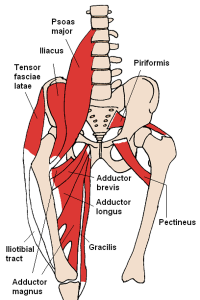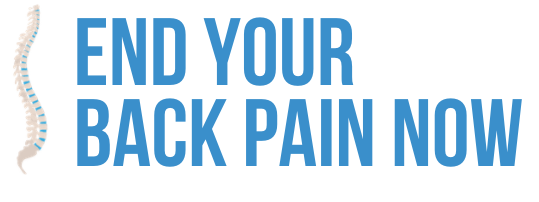While its not very hard to finding information on how to stretch your hip flexors on the web, it IS common to find this stretch performed incorrectly! When stretching the hip flexors, you MUST pay very close attention to the pelvic tilting. If you do not, its very easy to agitate the lower segments of the spine, especially when they are degenerative.
Why Stretch Hip Flexors?
 First, I hope you have read a few of my previous posts on the topic of muscle imbalances! If not, make sure you do so. The primary hip flexor muscles we are concerned with, the Psoas Major, Iliacus, and the Rectus Femoris, will cause the pelvis to tip forward (called anterior pelvic tilt). If excessive, it can contribute to lower back pain.
First, I hope you have read a few of my previous posts on the topic of muscle imbalances! If not, make sure you do so. The primary hip flexor muscles we are concerned with, the Psoas Major, Iliacus, and the Rectus Femoris, will cause the pelvis to tip forward (called anterior pelvic tilt). If excessive, it can contribute to lower back pain.
This anterior tilt is a problem because it not only increases lumbar lordosis (the inward arch in the spine), but also distorts the position of the hips. In short, it induces all sorts of biomechanical mess!
Positive Effects of Hip Flexor Stretching
Based on the above, the anterior tilt of the pelvis causes the hamstrings to lengthen, as they attempt to stop the pelvis from going forward. As you can imagine, this is exhausting for a set of muscles to do for any length of time. This leads to fatigue, tension, and weakness of the hamstrings.
In addition, due to neurological laws (Reciprocal inhibition in particular), the glute muscles will become weakened. Of course this is a problem because your glutes are the largest hip extensor muscle. If they are not doing their job, then your lower back muscles and hamstrings take a beating as they attempt to compensate for the workload.
